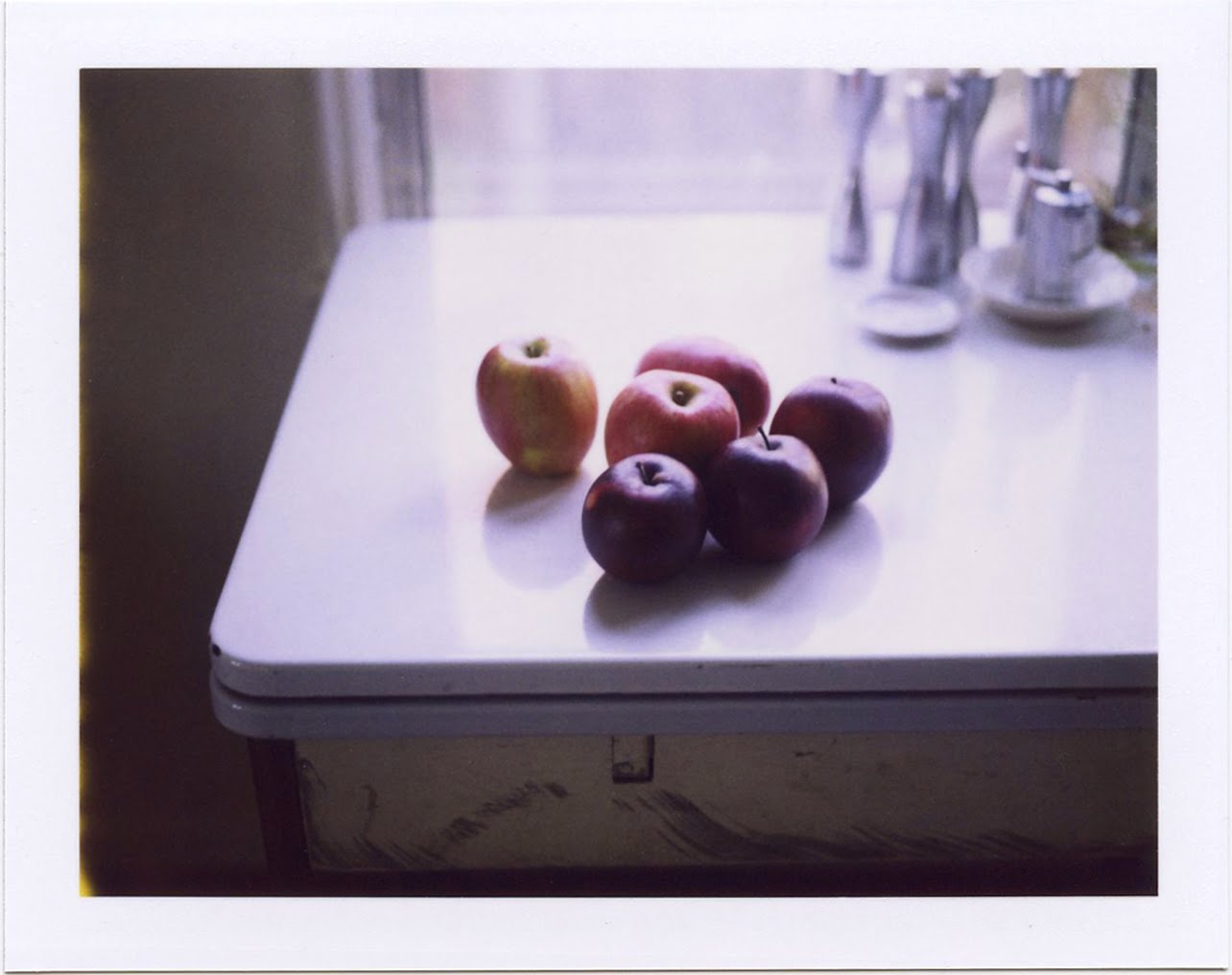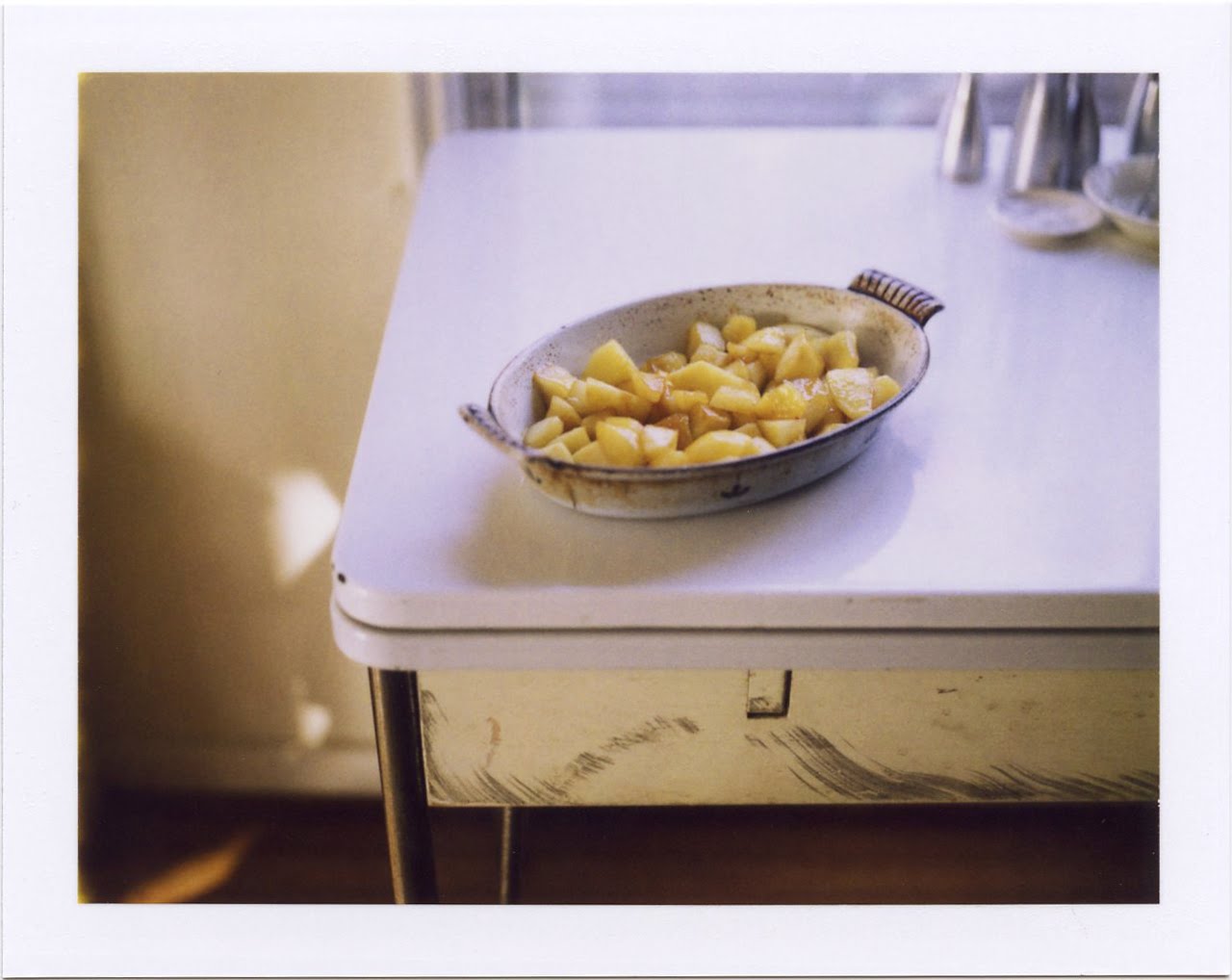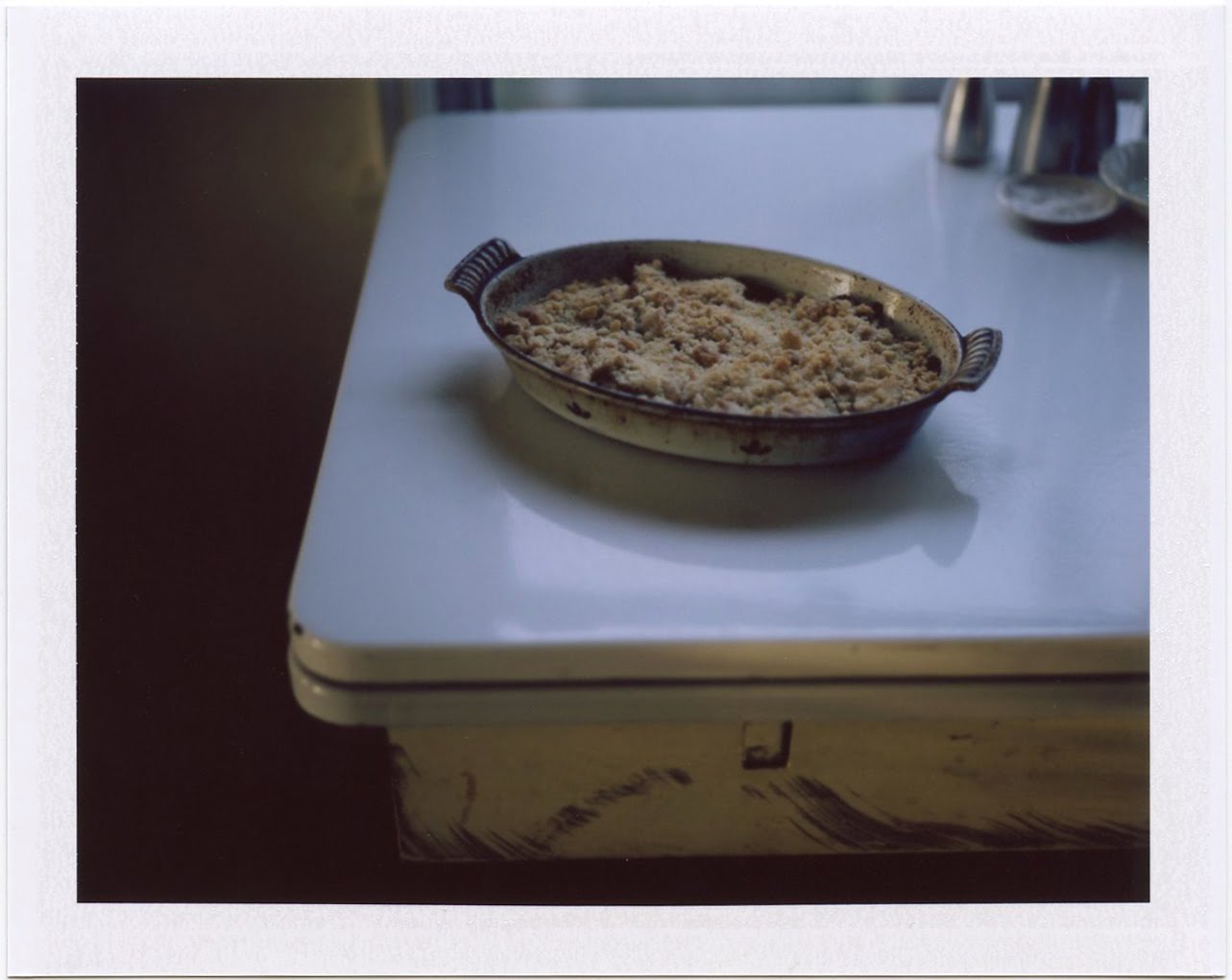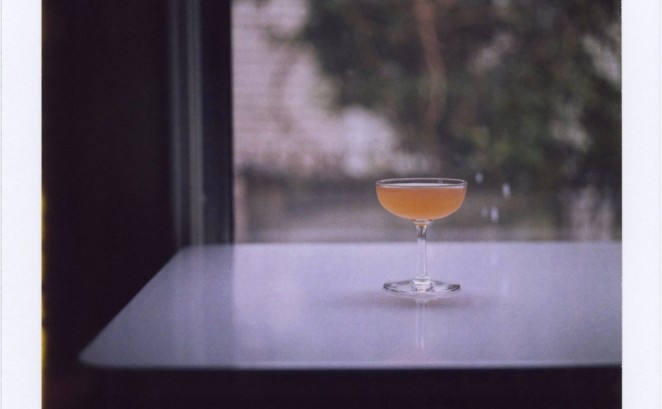Month: February 2011
This one does something interesting
In the days since we last spoke, I’ve flown to Oklahoma and back. I’ve introduced my mother to 24. I’ve made Cafe Lago meatballs with my mother, braised a pan of endive and serrano ham with my mother, and put away a couple of Negronis, also with my mother. I’ve baked a coffee cake using a tin of baking powder from my mother’s cabinet that, you know, it turns out, expired in 2006. I’ve thrown away a coffee cake. I’ve filed and paid our 2010 income taxes! I’ve had a toothache! I’ve sent off my book proposal! I’m using a lot of exclamation points!
And because of this second-to-last item, because you’ve been such cheerful, cheering, much-needed companions in Book Proposal Land, I baked you an apple crumble. Then I ate about a quarter of it – chewing only on the left side of my mouth, of course, because I’m almost sure I’m having a root canal on the right side later this week.

This recipe comes from Nigel Slater, whose latest book, Tender, Volume II: A Cook’s Guide to the Fruit Garden, has been living on my kitchen table since Christmas. We’ve been eating breakfast together. I drink my coffee; Nigel gets worked up about apples:
A baked apple, its skin split, the top half rising like a beret, is best achieved with an acidic variety. The list includes Golden Noble, Kentish Fillbasket, Emneth Early, Monarch, Charlotte, Newton Wonder, Lord Derby and the Carlisle and Keswick Codlins. Most of these I have met at some point in my cooking life; others, such as Edward VII and the Eynsham Dumpling, I have never seen on sale, let alone poured custard over. Then, of course, there are the seedlings: Bramley, Dumelow’s and Pott’s. If you are in Cornwall with nothing much to do on an October afternoon, you might like to go in search of the Colloggett Pippin. You will be in with a good chance if you pronounce it Clogget and are within sight of the Tamar. The Cornish have a habit of shortening place names the way children shorten those of their best friends.
I love him. I also like his apple crumble quite a bit. The world does not need another apple crumble recipe, as he notes, but this one does something interesting, and it’s worth noting. After you toss the apple pieces with sugar and lemon juice, you don’t just chuck them into the baking dish. You put them in a hot skillet with some butter, and you leave them alone there for a while, longer than you’d think, until they’re golden in patches and glazed in their own caramelized juices. It reminds me of the first step in making a tarte Tatin, only you’re not letting them go nearly that far. Just far enough to make them smell like some fantastic hybrid of toffee and hot cider. WAIT. Think about that. Toffee and hot cider, as one. Does that exist? World, make this happen for me.

So yes, you take those lightly caramelized apples, and you put them in your baking dish, and then comes the topping and the baking. The usual. My finished crumble would not win a beauty pageant, or even bring home the sash for third runner-up, but that’s not the point of crumbles, is it? Did I miss something? It looks like a crumble. But it certainly tastes nice.

In fact, the resemblance to tarte Tatin doesn’t end with the method. There’s a little tarte Tatin to the flavor, too, the way the soft, sticky, long-cooked apples taste under all that rubble of topping, all that butter. I’m going to hang onto this method. I might think about using more apples next time – once baked, the apple-to-topping ratio is about 1:1, and I prefer 2:1 – but that’s just fussing.
Nigel Slater’s Apple Crumble
Adapted from Tender, Volume II: A Cook’s Guide to the Fruit Garden
For my crumble, I wanted a mixture of apples: some that would fall apart, and some that would hold their shape. But all I could find today was the latter, so that’s what I went with. I used two Braeburns and two Arkansas Blacks. The amount of sugar called for in the filling worked nicely with my apples, but if you’re using sweeter varieties, you might want to cut back. Also, it’s probably a good idea to taste the apples after they’ve cooked in the skillet, before you bake them; that way, you can add more lemon or sugar, if needed. I get the sense that Mr. Slater wants us to use our intuition.
Also, about sugar: the original recipe calls for golden caster sugar, which is a challenge to find here. I don’t think it’s a dealbreaker to use standard granulated sugar instead. Or you could substitute a mixture of superfine sugar (also known as baker’s sugar) and brown sugar, maybe? I had some unrefined sugar in the pantry, so I used that, and it worked fine.
One last thing: the original is written only in grams, but I’ve added volume measurements, so you can do it either way. But if you’ve got a scale, pull it out. Much less fiddly than using measuring cups and spoons.
For the filling:
For the topping:
Preheat the oven to 350°F.
Peel and core the apples, cut them into rough 1-inch chunks, and toss them with the juice of the lemon half and the sugar.
Warm a skillet over medium-high heat. Add the butter, and when it stops foaming, dump in the apples and their juices. Nudge the apples around so that they lie in a single layer, and then leave them alone for a while. The juices will thicken to a syrup that coats the fruit, and the fruit should get golden in patches. Stir gently once or twice, cooking until the apples have a little color. (This may take longer than you’d expect.) They should smell sensational.
Turn the apples and any caramelly juices out of the skillet into a baking dish. (I used an oval gratin dish that measures about 10 inches long and 7 inches wide, though you would be fine with a dish that’s even a little smaller.) If there are any sticky bits left in the skillet, add a squeeze of lemon juice and/or a splash of water, and stir until they dissolve. Add to the apples.
To make the topping, put the butter and the flour in a medium bowl, and rub the butter into the flour with your fingertips until the mixture looks like fine breadcrumbs. (Alternatively, you could do this in a food processor.) Stir in the sugar. Drizzle in a tablespoon of water, and shake the bowl back and forth until some of the mixture sticks together in gravel-sized lumps. This way, you get some parts of the topping that are sandy and others that are gravelly or pebbly. Distribute the topping evenly over the apples. Bake for 45 minutes to 1 hour, or until pale golden. Serve warm or at room temperature.
Yield: 4 servings
By popular demand

Good people! Here it is, by popular demand: my new friend Aperol. Your new friend Aperol. Our soon-to-be old friend Aperol. I first tasted Aperol last November, when Brandon and I spent the weekend after Thanksgiving at a friend’s apartment in Brooklyn. We were wandering around that Saturday, I think, content to have no plans and no restaurant to run, and late in the afternoon, we wound up at Marlow & Sons for some oysters and a plate of soppressata. There was something called an Aperol Spritzer on the cocktail menu, and though I knew that Aperol is bitter and I had yet to meet a bitter drink I liked, I went temporarily insane and ordered it. It came in…
Read more
